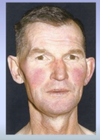Heart sounds and murmurs Flashcards
What do the normal heart sounds represent?
- S1 “lub”: closure of mitral & tricuspid valves
- S2 “dub”: closure of aortic & pulmonary valves

Explain a third heart sound (S3)
- Blood entering stiff/dilated ventricles during early diastole
- S3 due to decelerated blood flow at ventricular elastic limit
- Low-frequency brief vibration

Give two causes of a third heart sound
Normal in children and young adults (<30)
- Heart failure
- MI
- Cardiomyopathy
- HTN
Explain a fourth heart sound
- Atrial contraction into non-compliant/hypertrophied ventricle
- Low pitched ‘Gallop’ at end diastole

Give two causes for a fourth heart sound
Always abnormal
- Heart failure
- MI
- Cardiomyopathy
- HTN
What are the important features when describing a murmur?
- Systolic or diastolic
- Pan/Ejection/Mid
- Where it is heard best
- Where it radiates to
How does ventilation affect auscultation of murmurs?
- Inspiration: vice-versa for expiration
- Increases venous return to right side of heart
- Decreases pulmonary return to left side of heart
- Therefore:
- Right-sided murmurs (T/P) louder on inspiration
- Left-sided murmurs (M/A) louder on expiration
Outline the grading of murmurs

Describe the auscultation findings of mitral stenosis
-
‘Rumbling’ mid-diastolic murmur
- Bell at apex; pt lying on left side
- Loud S1
- ‘Opening snap’

Name two signs (other than on auscultation) of mitral stenosis
- Malar flush
- Low volume pulse
- AF
- CXR
- Enlarged left atrium
- Pulmonary oedema

Name one cause of mitral stenosis
- Rheumatic heart disease
- Old age; calcification
Describe the auscultation findings of mitral regurgitation
- Pansystolic “blowing” mumur
- Radiating to axilla

Name two signs (besides auscultation) of mitral regurgitation
- Malar flush
- Displaced apex beat
- Palpable thrill

Give two causes of mitral regurgitation
- Prolapsing mitral valve
- Rheumatic mitral regurgitation
- Papillary muscle rupture post-MI
- Cardiomyopathy
- Connective tissue disorders:
- Marfan’s syndrome
- Ehlers Danlos
- Osteogenesis imperfecta

Describe the auscultation findings of aortic stenosis
- Ejection systolic murmur
- Radiating to carotids




